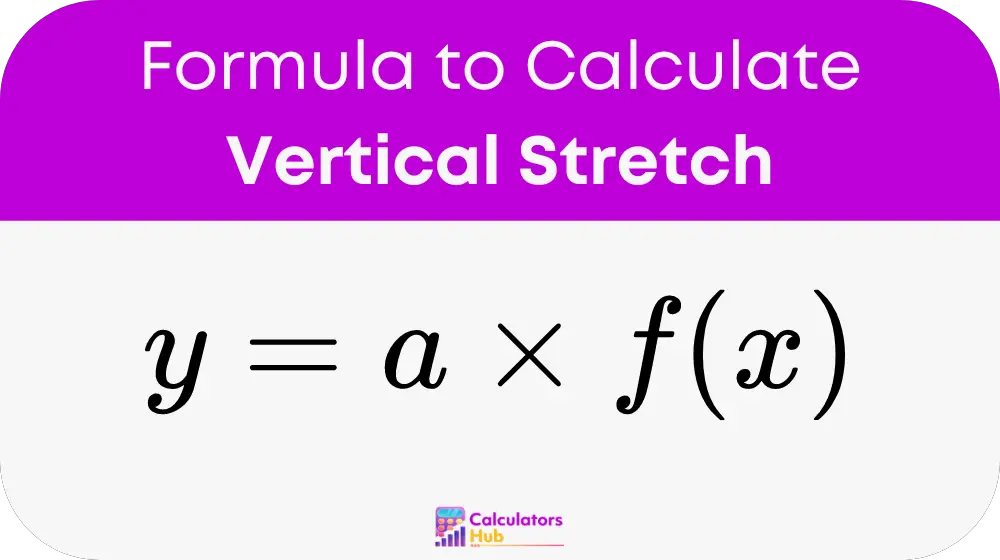This calculator allows users to input a mathematical function and a vertical stretch factor to see how the function’s graph is transformed. It is an invaluable tool in fields ranging from physics to graphic design, where precise manipulations of functions are necessary for simulations and visualizations.
Formula of Vertical Stretch Calculator
To calculate the vertical stretch of a function, use the following formula:

Where:
yis the vertically stretched functionais the vertical stretch factorf(x)is the original function
The factor ‘a’ determines the nature of the stretch:
- If
a > 1, the function stretches vertically. - If
0 < a < 1, the function compresses vertically. - If
a < 0, the function reflects across the x-axis and either stretches or compresses vertically depending on the absolute value of ‘a’.
Table of Common Values
Here’s a helpful table showing how different values of ‘a’ affect some standard functions:
| Stretch Factor (a) | Function Example | Resulting Function |
|---|---|---|
| 2 | f(x) = x^2 | 2x^2 |
| 0.5 | f(x) = sin(x) | 0.5sin(x) |
| -1 | f(x) = x | -x |
Use this table to quickly understand and predict the effects of different stretch factors on various functions.
Example of Vertical Stretch Calculator
Consider the function f(x) = x^2. Using a stretch factor of 3, the calculator will show:
y = 3 * (x^2) = 3x^2
This demonstrates how the parabola y = x^2 becomes steeper, making y = 3x^2.
Most Common FAQs
A1: If ‘a’ is less than 1, the function compresses vertically, making the graph wider and less steep.
A2: Yes, the calculator is designed to handle a variety of functions, including linear, quadratic, exponential, and trigonometric functions.
A3: Vertical stretching changes the steepness of a function’s graph without altering its x-intercepts or the overall shape.